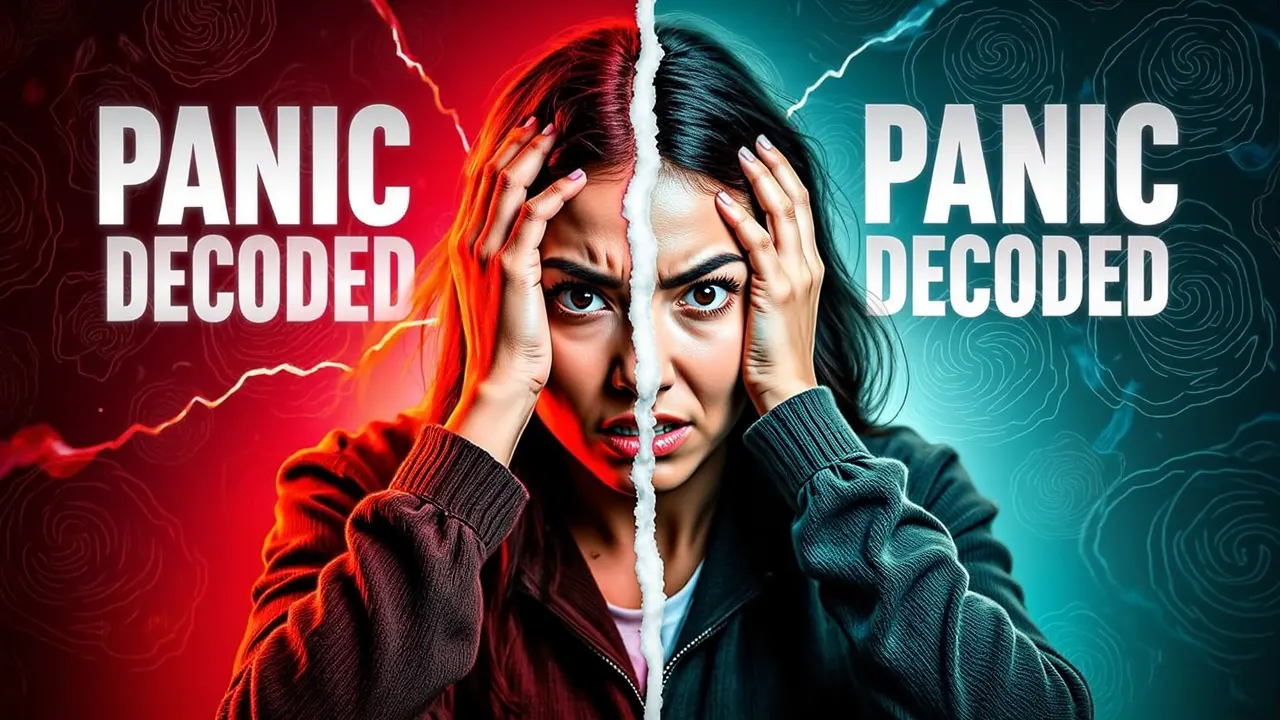Full article about Panic: Diagnosis, Treatment and Management
Introduction
Panic or panic attack is an anxiety state that is accompanied by intense and sudden fear. This state may occur without prior warning and at any time. In this article, we will discuss panic in detail, diagnosis methods, consultation with a psychologist, natural and pharmaceutical treatments, practical exercises for improvement, its effects at different ages, causes and origin of panic, mental treatment, risks in old age and its similarities with other diseases.
Important content of the author: Read this article in full and at the end I wrote my personal opinion and review my personal experiences of panic and its treatment. It is 100% useful for you
Things to do before diagnosing panic
Before diagnosing panic, the following should be considered:
1. Recording symptoms: Accurately recording the symptoms and the time they occur helps the doctor to make a correct diagnosis.
2. Visit a general practitioner: You should first visit a general practitioner to check for other physical problems that may have similar symptoms.
3. Medical tests: Conducting various tests such as blood tests, ECG, etc. to rule out other diseases.
Correct method of diagnosing panic
The diagnosis of panic is usually made by a psychiatrist or clinical psychologist. The diagnostic steps include:
1. Clinical interview: Reviewing the patient’s medical and psychological history.
2. Symptom assessment: Reviewing the physical and psychological symptoms that the patient experiences.
3. Questionnaires and tests: Using standardized questionnaires and tests such as the DSM-5 for an accurate diagnosis.
Consulting a psychologist
Consulting a psychologist can help the patient better manage panic symptoms. The psychologist can use various methods such as:
1. Cognitive-behavioral therapy (CBT): Changing negative thought patterns and unhelpful behaviors.
2. Exposure therapy: Helping the patient to face feared situations in a controlled manner.
3. Individual or group counseling: Counseling sessions to discuss and examine problems and find appropriate solutions.
Natural and pharmacological treatment options
Treatment of panic can be done naturally or with the use of medications.
Natural treatments:
1. Relaxation techniques: Deep breathing exercises, meditation, and yoga.
2. Regular exercise: Regular physical activity can help reduce anxiety.
3. Healthy nutrition: Eating healthy and balanced foods.
4. Herbal remedies: Using calming herbs such as chamomile and lavender.
Pharmacological treatments:
1. Anti-anxiety medications: Such as benzodiazepines (clonazepam, alprazolam).
2. Antidepressants: Such as SSRIs (fluoxetine, sertraline).
3. Beta-blockers: To reduce physical symptoms such as heart palpitations.
Practical exercises for recovery
1. Deep breathing exercises: Deep, slow breathing can help reduce panic symptoms quickly.
2. Meditation exercises: Focusing on the mind and relaxing.
3. Physical exercises: Exercises such as walking, running, and yoga.
Effects of panic at different ages
Panic can occur at any age, but its effects at different ages may be different:
1. Children and adolescents: May experience physical symptoms such as stomachaches and headaches.
2. Adults: May face problems with work and society.
3. The elderly: Have higher risks such as heart problems and high blood pressure.
Causes and Origins of Panic
The causes of panic may include genetic factors, brain chemistry, environmental stressors, and life experiences. Research has shown that an imbalance of chemicals such as serotonin and norepinephrine in the brain can play a significant role in the development of panic.
Mental therapy for panic
Mental therapy involves techniques that help change negative thought patterns. These methods include:
1. Cognitive-behavioral therapy (CBT): Changing thought and behavioral patterns.
2. Mindfulness-based therapy: Focusing on the present moment and accepting without judgment.
Risks of panic in older age
In older age, panic can have more serious risks. These risks include:
1. Heart problems: Panic can cause increased blood pressure and heart rate.
2. Increased risk of falls: Anxiety and fear can reduce balance and increase the risk of falls.
3. Increased psychological problems: Panic can exacerbate psychological problems such as depression and isolation.
Similarities of panic problems with other diseases
The symptoms of panic may be similar to those of other diseases, including:
1. Heart disease: palpitations and chest pain.
2. Thyroid problems: symptoms of anxiety and irritability.
3. Digestive diseases: stomach pain and nausea.
Personal writings about panic
I have been struggling for about 3 to 4 years and this is how it started
At first, with a double espresso and a nervous shock, my blood pressure went up to 19 and the device was connected to me for about 2 to 3 days and first I went to the cardiologist and had tests
I still didn’t know what the real problem was and I was very shocked. After the heart tests, the doctor said it was for stress and to go exercise and gave me a loan of Zybetal 5 and said to use this pill if needed.
I started exercising very slowly for a few months and I was using Zibetal 5, which is a beta blocker, and I was gradually getting better until after 6 months I got corona and then I didn’t do that previous exercise process and my eating and drinking got a little bad, like fast food and alcohol.
A few months later, the panic problem came back and I got into a story stress again that was gradually affecting my nerves and I was facing stomach pain and acid stomach every day and I also had high heart rate.
That is, I started with a heart problem and ended up with an acid stomach and nervousness. And I still didn’t know that my main problem was panic. After a few months of taking stomach pills from my gastroenterologist, I got better and gradually distanced myself from daily tensions. Almost 2 to 3 years passed and I still didn’t know that I had a panic problem.
After researching on the internet and examining the symptoms like heart palpitations and sweating that would come and go in 30 minutes, I calmed down a bit. I saw that the symptoms on the internet were all similar to mine and the name of this problem is panic and it is completely mental!
After all these years, when I just realized what my problem was, I was very happy that the problem was completely mental and that it could be treated with meditation and breathing exercises. Once you realize that this problem is completely mental, you have moved forward in the treatment process. I talked to a psychiatrist and he gave me a lot of guidance and confirmed that these symptoms were panic and I calmed down again.
The solution the doctor gave me was to first accept that it is nothing and that it is completely mental and that there is nothing serious that is trying to kill you and try to let go of your emotions during a panic attack and not take it seriously at all so that you lose. One of the other exercises was that he said to try to create the symptoms yourself and try to deal with them. It is possible that everyone has some kind of symptoms and the person himself knows better how to get a panic problem. It is enough to mentally create symptoms at other times and practice to get rid of the panic.
Certainly, a calm mind and a calm environment are very good for improving this problem, but in my opinion, the best way is to know that this problem is not real at all and that we are creating a little hormonal disorder with our minds and, at the end, we are shocking ourselves with our own beliefs.
I hope this article is useful for you and that you get rid of this ridiculous mental disorder like me.
Remember that the origin of this is a problem in the past that you think about a lot and get nervous about. Try to forget these issues easily with mind relaxation techniques and meditation and shamanic techniques.
Conclusion
Panic is a serious problem that requires proper attention and treatment. With proper diagnosis, consultation with a psychologist, the use of natural and pharmaceutical treatment methods and practical exercises, panic symptoms can be managed and reduced. It is also important to consider the effects of panic disorder at different ages and its similarities to other illnesses. With proper care and treatment, people can live better lives and prevent problems caused by panic disorder.


